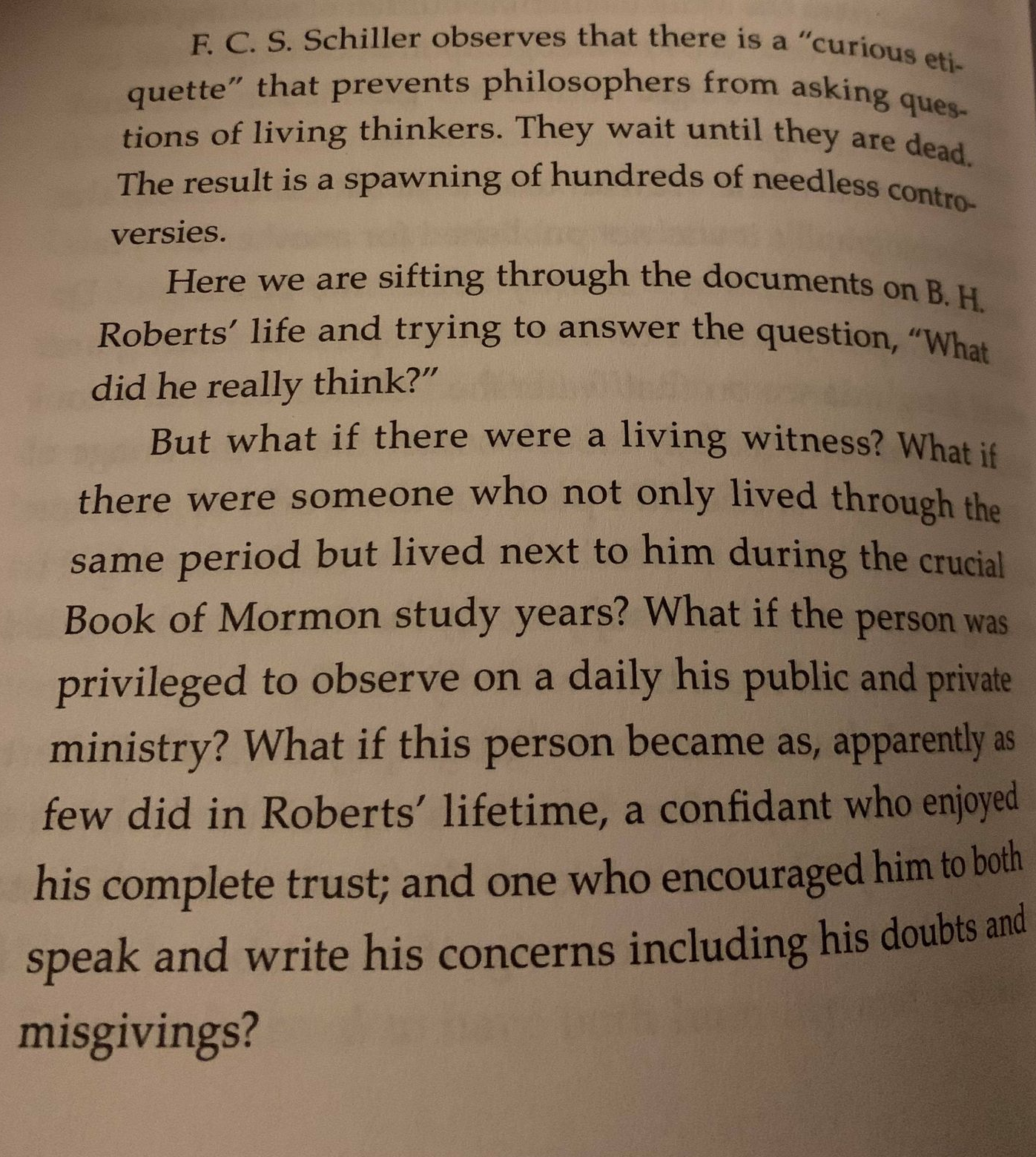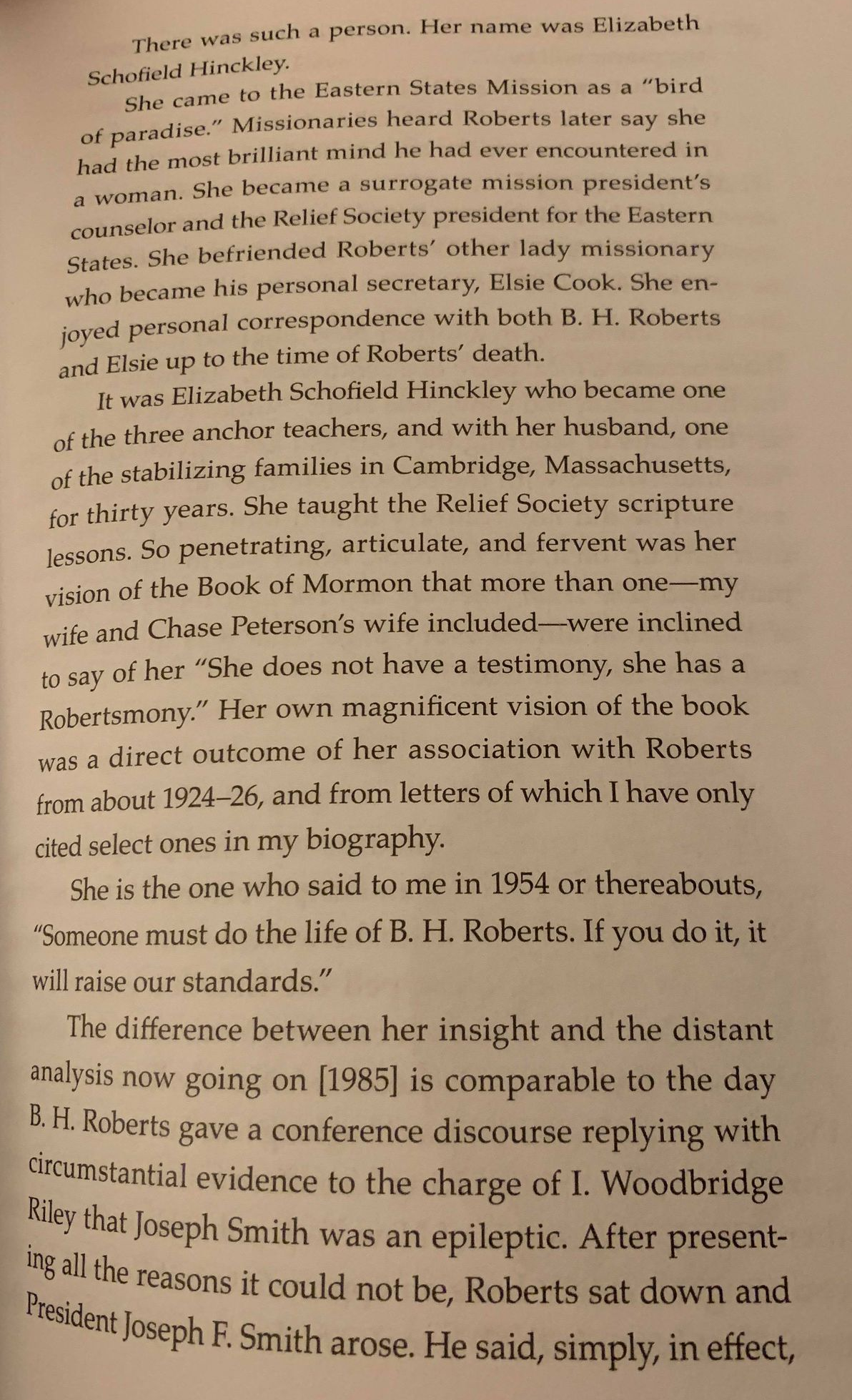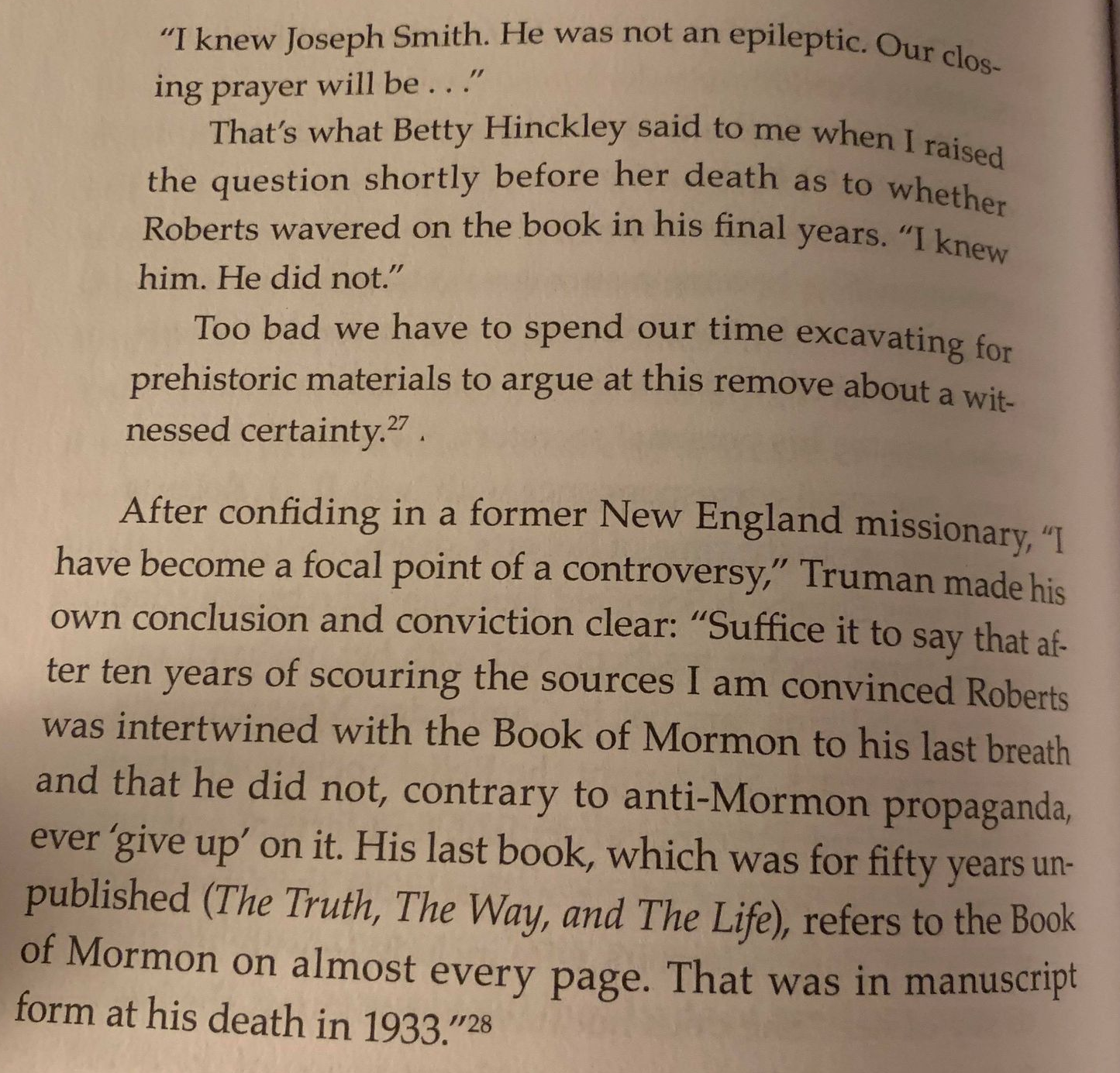TGM records ESH's comments about BHR remaining a believer in the BOM during his BOM Study.
- Type
- Book
- Source
- Truman G. Madsen LDS
- Hearsay
- 3rd Hand
- Reference
Truman G. Madsen, "Ian Cumming Banquet, December 5, 1985"; Journal 1985 in Barnard N. Madsen, The Truman G. Madsen Story: A Life of Study and Faith (Salt Lake City: Deseret Book, 2016), 328-330
- Scribe/Publisher
- Deseret Book
- Audience
- Reading Public
- Transcription
F. C. S. Schiller observes that there is a "curious etiquette" that prevents philosophers from asking questions of living thinkers. They wait until they are dead. The result is a spawning of hundreds of needless controversies.
Here we are sifting through the documents on B. H. Roberts' life and trying to answer the question, "What did he really think?"
But what if there were a living witness? What if there were someone who not only lived through the same period but lived next to him during the crucial Book of Mormon study years? What if the person was privileged to observe on a daily basis his public and private ministry? What if this person became, as apparently as few did in Roberts' lifetime, a confidant who enjoyed his complete trust; and one who encouraged him to both speak and write his concerns including his doubts and misgivings?
There is such a person. Her name was Elizabeth Schofield Hinckley.
She came to the Eastern State Mission as a "bird of paradise." Missionaries heard Roberts say later she had the most brilliant mind he had never encountered in a woman. She became a surrogate mission president's counselor and the Relief Society president for the Eastern States. She befriended Roberts' other lady missionary who became his personal secretary, Elsie Cook. She enjoyed personal correspondence with both B. H. Roberts and Elsie up to the time of Roberts' death.
It was Elizabeth Schofield Hinckley who became one of the three anchor teachers, and with her husband, one of the stabilizing families in Cambridge, Massachusetts, for thirty years. She taught the Relief Society scripture lessons. So penetrating, articulate, and fervent was her vision of the Book of Mormon that more than one—my wife and Chase Peterson's wife included—were inclined to say of her "She does not have a testimony, she has a Robertsmony." Her own magnificent vision of the book was a direct outcome of her association with Roberts from about 1924-1926, and from letters of which I have only cited select ones in my biography.
She is the one who said to me in 1954 or thereabouts, "Someone must do the life of B. H. Roberts. It you do it, it will raise our standards."
The difference between her insight and the distant analysis now going on [185] is comparable to the day B. H. Roberts gave a conference discourse replying with circumstantial evidence to the charge of I. Woodbridge Riley that Joseph Smith was an epileptic. After presenting all the reasons it could not be, Roberts sat down and President Joseph F. Smith arose. He said, simply, in effect, "I knew Joseph Smith. He was not an epileptic. Our closing prayer will be . . ."
That's what Betty Hinckley said to me when I raised the question shortly before her death as to whether Roberts wavered on the book in his final years. "I knew him. He did not."
Too bad we have to spend our time excavating for prehistorical materials to argue at this remove about a witnessed certainty.
- Citations in Mormonr Qnas
The B. H. Roberts Foundation is not owned by, operated by, or affiliated with the Church of Jesus Christ of Latter-day Saints.



